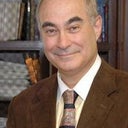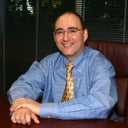Posted underLaser Resurfacing q&a
Which Laser Treatment is Best for Facial Rejuvenation and Skin Tightening?
I am planning on having skin resurfacing done. I am 45 with lax skin and a few acne scars, jowls. My goal is skin tightening (within reason), skin rejuvenation, and just overall healthier look. I have been to 2 doctors- one said he would use the Active FX (this is his strongest laser) and the other suggested Fraxel repair (i have had 2 fraxel restore with some improvement). Which of these two treatments is the most aggressive? What is the typical price point for them, if you know?
Answers (26)
From board-certified doctors and trusted medical professionals

Dr. Jason Emer, MD
Dermatologic Surgeon, Board Certified in Dermatology
Answer

Dr. Lawrence Kass, MD
Oculoplastic Surgeon, Board Certified in Ophthalmology
Answer
More Laser Resurfacing Questions
See all Laser Resurfacing Q&AWE SEND PRETTY
EMAILS
What’s trending? Who’s turning heads? Which TikTok myths need busting? We’ve got you. No fluff, no gatekeeping—just real talk. Get our free, unfiltered newsletter.





